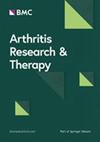地中海饮食对椎体压缩性骨折患者死亡率的影响
IF 4.6
2区 医学
Q1 Medicine
引用次数: 0
摘要
椎体压缩性骨折(VCF)是世界上常见的脆性骨折,死亡率很高。椎体压缩性骨折的治疗和预防始于合理的营养。地中海饮食(Mediterranean diet,MD)富含均衡营养,已被证明对多种慢性疾病有益。然而,坚持地中海饮食(aMED)与 VCF 患者预后的关系仍不明确。本研究的目的是探讨地中海饮食与 VCF 患者全因和心血管疾病(CVD)原因死亡率之间的关系。本研究从2013-2014年美国国家健康与营养调查(NHANES)中抽取了年龄≥40岁的VCF患者。骨矿密度(BMD)双能 X 射线吸收测量法(DXA)用于诊断 VCF。我们使用加权单变量 Cox 比例危险模型筛选与 VCF 患者预后相关的协变量。我们利用加权多变量 Cox 比例危险模型来探讨 aMED 与 VCF 患者死亡风险之间的关系,并用危险比(HR)和 95% 置信区间(CI)来描述。基于不同并发症的亚组分析进一步评估了两者之间的关系。共纳入了2730名符合条件的VCF患者。截至2019年12月12日,共记录了218例(7.99%)死亡病例。在对所有 VCF 进行调整后,我们发现全因死亡率(HR = 1.75,95%CI:1.13-2.73,P = 0.041)和心血管疾病原因死亡率(HR = 2.35,95%CI:1.12-4.91,P = 0.038)的风险较高;然而,我们发现 aMED 与全因死亡率或心血管疾病原因死亡率之间没有显著关联(所有 P > 0.05)。与无 VCF 且 aMED 评分≥6 分的患者相比,VCF 且 aMED 评分<6 分的患者全因死亡(HR = 2.27,95%CI:1.25-4.13,P = 0.025)和心血管疾病死亡(HR = 4.25,95%CI:1.64-11.06,P = 0.013)的风险更高。我们的研究还表明,与 aMED ≥ 6 的患者相比,aMED < 6 的患者全因死亡率(HR = 2.26,95%CI:1.22-4.17,P = 0.002)和心血管疾病因死亡率(HR = 3.31,95%CI:1.28-8.57,P = 0.018)较高,这一结果表明 aMED 可能对 VCF 与死亡率的相关性有调节作用。亚组分析表明,这种调节作用仍然很强,尤其是在血脂异常(HR:2.49,95%CI:1.29-4.80,P = 0.009)、心血管疾病(HR:3.48,95%CI:1.56-7.74,P < 0.001)和慢性肾脏病(HR:3.64,95%CI:1.50-8.78,P < 0.001)患者中。我们发现 aMED 对 VCF 患者与死亡率之间的关联具有调节作用。我们的研究进一步支持了MD作为一种潜在健康饮食模式的重要性。本文章由计算机程序翻译,如有差异,请以英文原文为准。
Impact of Mediterranean diet on mortality in vertebral compression fracture patients
Vertebral compression fractures (VCF) is a common fragility fracture with high mortality worldwide. The management and prevention of VCF start with a proper nutrition. The Mediterranean diet (MD) is rich in balanced nutrients and has been shown to be beneficial for several chronic diseases. However, the association of adherence to Mediterranean diet (aMED) and prognosis of VCF patients remains unclear. To explore the association between aMED and all-cause and cardiovascular disease (CVD)-cause morality in VCF patients. In present study, patients aged ≥ 40 years old and with the VCF patients measurement were extracted from the National Health and Nutrition Examination Survey (NHANES) 2013–2014. The bone mineral density (BMD) dual-energy X-ray absorptiometry (DXA) was used to diagnose VCF. We used the weighted univariable Cox proportional hazards model to screen the covariates related to the prognosis of VCF patients. We utilized the weighted multivariable Cox proportional hazards models to explore the association between aMED and the risk of mortality in VCF patients, and were described as hazard ratios (HRs) and 95% confidence intervals (CIs). Subgroup analyses based on different complications were further assessed the association. A total of 2,730 eligible VCF patients were included. Until 12 December 2019, 218 (7.99%) deaths were documented. After adjusting for all VCFs, we found a high risk of all-cause mortality (HR = 1.75, 95%CI: 1.13–2.73, P = 0.041) and CVD-cause mortality (HR = 2.35, 95%CI: 1.12–4.91, P = 0.038); however, we found no significant association between aMED and all-cause mortality or CVD-cause mortality (all P > 0.05). Compared to patients without VCF and with aMED score ≥ 6, patients with VCF and aMED score < 6 has a higher risk of all-cause (HR = 2.27, 95%CI: 1.25–4.13, P = 0.025) and CVD-cause mortality (HR = 4.25, 95%CI: 1.64–11.06, P = 0.013). Our study also suggested that compared to patients with aMED ≥ 6, those patients with aMED < 6 has high all-cause (HR = 2.26, 95%CI: 1.22–4.17, P = 0.002) and CVD-cause mortality (HR = 3.31, 95%CI: 1.28–8.57, P = 0.018), this results suggested that aMED may have a moderating effect on the association of VCF and mortality. Subgroups analysis shown this moderating effect remain robust, especially in patients with dyslipidemia (HR: 2.49, 95%CI: 1.29–4.80, P = 0.009), CVD (HR: 3.48, 95%CI: 1.56–7.74, P < 0.001) and CKD (HR: 3.64, 95%CI: 1.50–8.78, P < 0.001). We found aMED have a moderating effect on the association between VCF patients and mortality. Our research further supports the importance of the MD as a potentially healthy eating pattern.
求助全文
通过发布文献求助,成功后即可免费获取论文全文。
去求助
来源期刊

Arthritis Research & Therapy
RHEUMATOLOGY-
CiteScore
8.60
自引率
2.00%
发文量
261
审稿时长
14 weeks
期刊介绍:
Established in 1999, Arthritis Research and Therapy is an international, open access, peer-reviewed journal, publishing original articles in the area of musculoskeletal research and therapy as well as, reviews, commentaries and reports. A major focus of the journal is on the immunologic processes leading to inflammation, damage and repair as they relate to autoimmune rheumatic and musculoskeletal conditions, and which inform the translation of this knowledge into advances in clinical care. Original basic, translational and clinical research is considered for publication along with results of early and late phase therapeutic trials, especially as they pertain to the underpinning science that informs clinical observations in interventional studies.
 求助内容:
求助内容: 应助结果提醒方式:
应助结果提醒方式:


